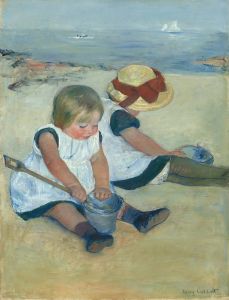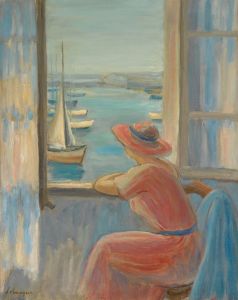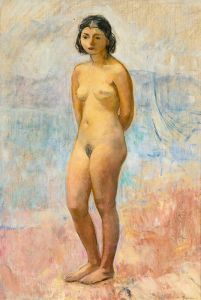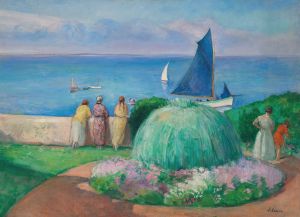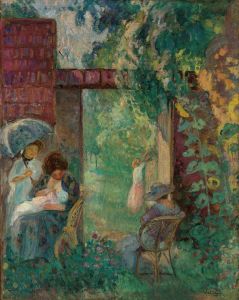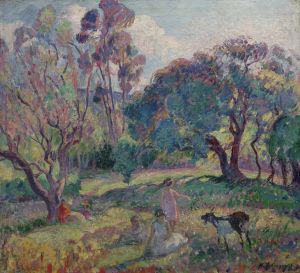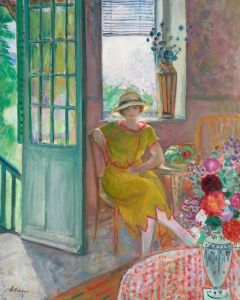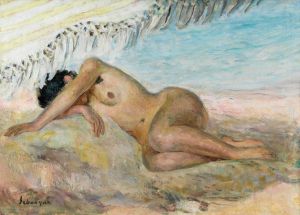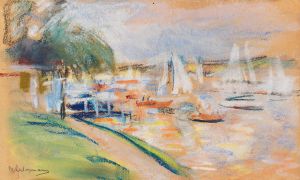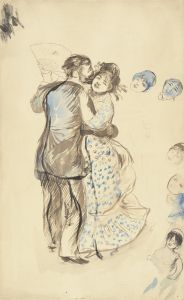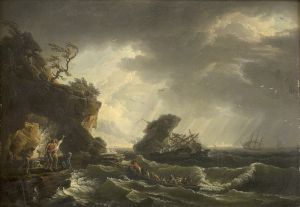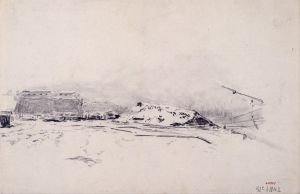
Devant le miroir à l’Ile-d’Yeu
A hand-painted replica of Henri Lebasque’s masterpiece Devant le miroir à l’Ile-d’Yeu, meticulously crafted by professional artists to capture the true essence of the original. Each piece is created with museum-quality canvas and rare mineral pigments, carefully painted by experienced artists with delicate brushstrokes and rich, layered colors to perfectly recreate the texture of the original artwork. Unlike machine-printed reproductions, this hand-painted version brings the painting to life, infused with the artist’s emotions and skill in every stroke. Whether for personal collection or home decoration, it instantly elevates the artistic atmosphere of any space.
Henri Lebasque was a French post-impressionist painter known for his vibrant use of color and light, often depicting intimate domestic scenes and landscapes. One of his notable works is "Devant le miroir à l’Ile-d’Yeu," which translates to "In Front of the Mirror at the Ile d’Yeu." This painting exemplifies Lebasque's characteristic style and thematic focus.
Henri Lebasque was born on September 25, 1865, in Champigné, France. He studied at the École des Beaux-Arts in Paris and worked alongside prominent artists such as Camille Pissarro and Auguste Renoir. Lebasque's work is often associated with the post-impressionist movement, which sought to extend the boundaries of impressionism by emphasizing more symbolic content, formal order, and structure.
"Devant le miroir à l’Ile-d’Yeu" is a reflection of Lebasque's fascination with light and color, as well as his interest in capturing the serene and intimate moments of everyday life. The Ile d’Yeu, an island off the western coast of France, was a frequent subject in Lebasque's paintings. The island's natural beauty and tranquil atmosphere provided a perfect backdrop for his exploration of light and color.
In this painting, Lebasque employs a soft, luminous palette to depict a scene of quiet introspection. The composition likely features a figure, possibly a woman, standing in front of a mirror, a common motif in art that allows for exploration of themes such as self-reflection and identity. The use of the mirror in art often serves as a metaphor for introspection and the duality of perception, both of oneself and the world.
Lebasque's technique in "Devant le miroir à l’Ile-d’Yeu" is characterized by loose brushwork and a harmonious blend of colors, creating a sense of warmth and intimacy. His approach to painting was influenced by his contemporaries and the vibrant landscapes of southern France, where he spent much of his later life. The influence of the Fauvist movement, known for its bold use of color, can also be seen in Lebasque's work, although his style remained more restrained and focused on capturing the subtleties of light.
Throughout his career, Lebasque exhibited his work in various salons and galleries, gaining recognition for his ability to convey the beauty of everyday moments through his art. His paintings often evoke a sense of calm and contentment, inviting viewers to appreciate the simple pleasures of life.
Henri Lebasque passed away on August 7, 1937, in Cannet, France. His legacy continues to be celebrated for his contributions to post-impressionism and his ability to capture the essence of light and color in his work. "Devant le miroir à l’Ile-d’Yeu" remains a testament to Lebasque's skill as a painter and his dedication to portraying the beauty of the world around him.





